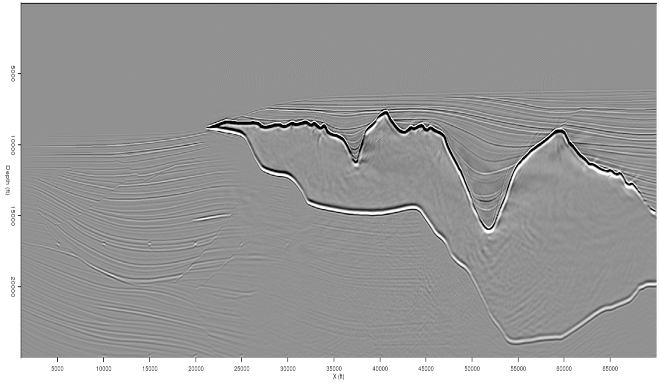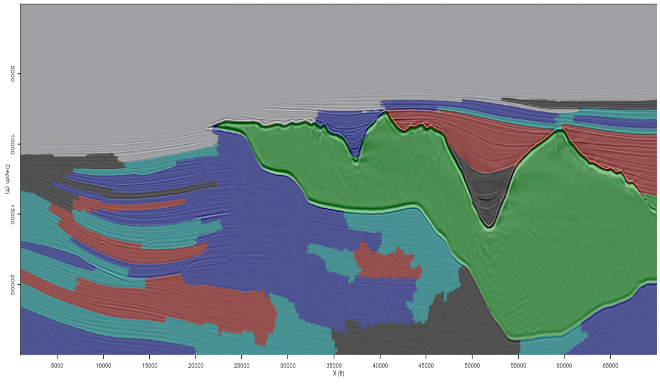 |
 |
 |
 | Model-building with image segmentation and fast image updates |  |
![[pdf]](icons/pdf.png) |
Next: Segmentation process
Up: Halpert and Ayeni: Segmentation
Previous: Halpert and Ayeni: Segmentation
The goal of any automated seismic image segmentation scheme is to automatically pick out or delineate regions within a seismic image. Salt interpretation is an especially useful application of this technology; large, subsurface salt bodies can be tedious and very time-consuming to interpret manually, but the sharp salt/sediment velocity contrast makes an accurate interpretation essential for building a satisfactory velocity model. This means that we should not rely solely on an automatic salt interpretation, but should instead draw on the expertise of experienced human interpreters to supplement the process. This can be accomplished in a variety of ways; for example, a manual 2D interpretation can be used to guide an automatic 3D segmentation (Halpert, 2011). A complementary option is to use human expertise to choose the best of several possible interpretations provided by an automatic algorithm. Here, we demonstrate one such strategy using fast image updates to examine differences between possible models.
The ``Pairwise Region Comparison'' (PRC) seismic image segmentation approach (Halpert, 2010; Halpert et al., 2010) relies on the graph-based segmentation method of Felzenszwalb and Huttenlocher (2004). This method is more efficient than eigenvector-based algorithms such as Normalized Cuts Image Segmentation (Lomask, 2007; Shi and Malik, 2000), and is capable of operating on full seismic images. Here, the PRC method is used on images from the Sigsbee 2A synthetic model to provide two possible top-salt interpretations. Then, a fast image-update scheme based on shot-profile migration is used to examine how an image changes as a result of the two interpretations.


|
|---|
zig-perf,seg-perf
Figure 1. Perfect-velocity image (a) and automatic segmentation result (b) from the Sigsbee synthetic model. In (b), the salt body has been interpreted nearly perfectly.
|
|---|
![[pdf]](icons/pdf.png) ![[pdf]](icons/pdf.png) ![[png]](icons/viewmag.png) ![[png]](icons/viewmag.png)
|
|---|
 |
 |
 |
 | Model-building with image segmentation and fast image updates |  |
![[pdf]](icons/pdf.png) |
Next: Segmentation process
Up: Halpert and Ayeni: Segmentation
Previous: Halpert and Ayeni: Segmentation
2011-05-24

